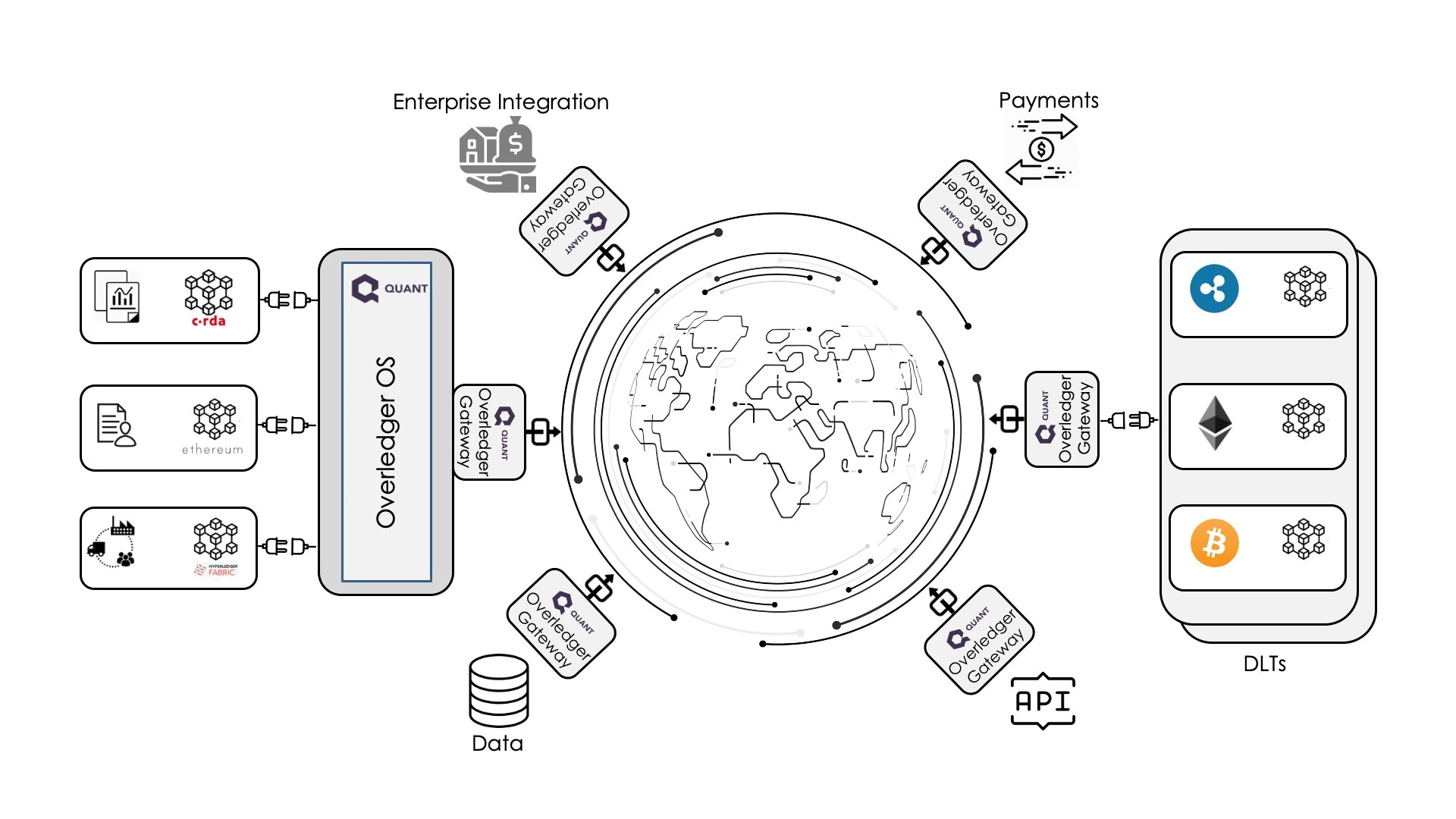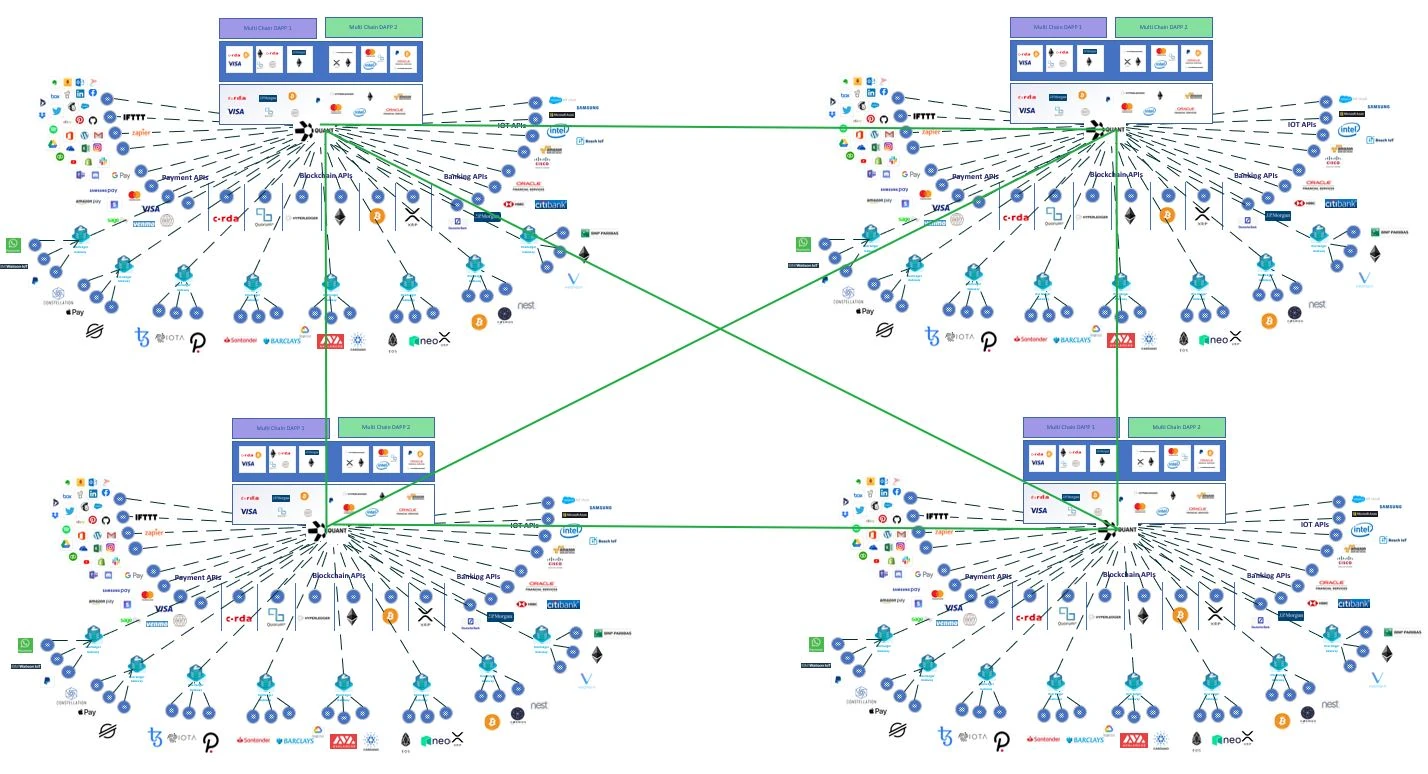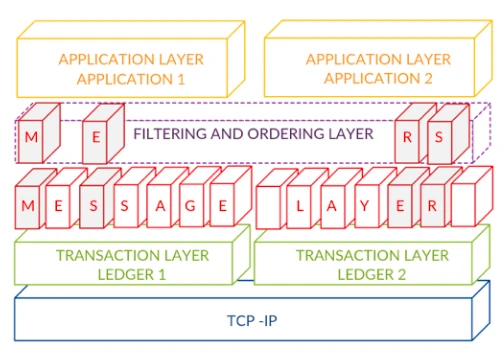Introduction
In the world of blockchain technology multiple blockchains emerging to cater to various industries, indeed. However, one major challenge is the lack of seamless interoperability between different blockchains and networks. Then come question like: What is Quant?
Because Quant, a project that aims to bridge this gap.
In fact, Quant enable the free flow of value, assets, and information between interconnected networks.
The Quant Network
At the heart of the Quant project lies indeed the Quant Network. In this case technological solution that automates trust functions between multiple blockchains.
Particularly, the network achieves this through its innovative operating system known as Overledger.
Overledger acts as the first operating system designed specifically for blockchains.
The goal of connecting global networks and also chains without compromising interoperability.

In fact, the Overledger operating system serves as the core infrastructure for building a future digital economy ecosystem.
It empowers developers and businesses to create decentralized multi-chain applications, surely.
They are known as MApps, for their customers, indeed.
To access the Overledger ecosystem, then everyone need to utilize the platform’s native token, QUANT (QNT).
Then cryptocurrency is used to pay for platform usage fees and annual licenses.
Interoperability Challenge
The vision of Quant is to create an “Internet of Trust,” where blockchains and also networks seamlessly communicate and interact with each other.

Of course, by addressing the challenges of interoperability, Quant aims to unlock the true potential of blockchain technology. Let’s then explore how Quant solves these challenges.
Bridging the Interoperability Gap
Blockchain and distributed ledger technologies have seen significant adoption, but they still struggle with seamless interoperability. Quant acts as the missing link, so offering a gateway for any network.
This gateway enables the transfer of value, exchange of messages, and also data interoperability between different blockchains.
Users can surely rely on the trust and security of the source chain without the need for additional blockchains.
Cost-Effective Development
Developing specific blockchain-based solutions can be costly and technically demanding.
In fact, Quant aims to support the development of tailor-made solutions for various sectors, eliminating the need for complex infrastructure encompassing multiple chains.
Businesses can access multiple blockchains through the Quant platform, so allowing them to leverage a diverse array of features.
Technological Agnosticism
Selecting the best blockchain system for specific needs can be challenging due to diverse technological and business requirements. Quant’s Overledger platform is technologically agnostic, so providing users with the flexibility to connect with various networks and blockchains without being tied to a single technology provider.
This approach accelerates the adoption of new applications and their features, indeed.
The Overledger Architecture
Of course to achieve its goals, the Overledger team has designed an architecture inspired by the TCP/IP model used in communication networks.
This architecture is organized into several layers, then each performing specific tasks to enable interoperability and scaling.
Let’s delve into the following four main layers of the Overledger architecture.

Indeed, the Overledger architecture consists of 4 layers: Transaction Layer, Messaging Layer, Filtering and Ordering Layer and Application Layer.
Moreover, each layer has a very important function, but more on that in a moment.
Transaction Layer
In fact, the Transaction Layer handles the storage of transactions using ledger technology.
So, it encompasses all operations required to achieve consensus within multiple blockchain domains.
This layer also simplifies the process by consolidating related operations in a single layer.
However, transactions made on a specific blockchain are limited to that domain and cannot be made valid in other ledgers. Therefore, this layer consists of varied and isolated ledgers.
Messaging Layer
Surely, the Messaging Layer deals with relevant information retrieved from the ledgers.
It includes smart contract data, metadata, and also transaction data. Metadata strings added to the layer represent indeed the digest of out-of-chain messages, acting as the payload.
This layer also stores transaction information and message digests between multiple applications.
Filtering and Ordering Layer
The Filtering and Ordering Layer handles messages extracted from transactions and composed of transaction information. Messages referenced via a hash undergo ordering and filtering, of course.
This layer establishes connections between messages originating in the Messaging Layer
and validates out-of-chain messages for metadata. It ensures that applications consider
only messages involving specific criteria, such as transferring tokens to a specific address.
Application Layer
The Application Layer allows valid messages to update the state of relevant applications.
Multiple applications can share identical messages or reference messages related to other applications.
Unique hash pointers refer to ledger transactions with message digests,
serving as identifiers to retrieve transactions from a database and confirm their unchanged status.
The Quant App Store
Building upon the Overledger architecture, Quant aims to create the Quant App Store,
a marketplace for developers to create and release MApps.
The App Store offers various pricing models, including zero charge rates, one-time fees per transaction or also application usage, and optional monthly subscriptions.
To access the platform, users must hold a predetermined number of Quant tokens.
Quant SAAS
In addition to the App Store, Quant plans to launch its Software-As-A-Service (SAAS)
for enterprise and middleware applications. These solutions will cater to specific sectors,
such as healthcare, supply chain, government, and financial services.
Quant Health, one of the products in development,
utilizes blockchain technology to help healthcare institutions maintain operational systems securely.
Quant Tokens
Quant’s native token, QNT, plays a crucial role in providing digital access to services
and applications within the Quant platform. Both users and developers require QNT tokens
to access the ecosystem. Access fees are determined based on a fixed fiat currency amount,
allowing developers to hold flexible amounts of QNT as its value fluctuates.
The total supply of QNT tokens stood at over 14.6 million.
The Quant Team
In fact, leading the Quant project is CEO Gilbert Verdian, a cybersecurity expert with over 20 years of experience. The team includes key members such as Chief Architect Jean-Paul de Jong and CTO Colin Paterson.
The project successfully raised approximately $11 million through an ICO in April 2018.
Quant faces competition from projects like WAN, Cosmos, and Polkadot, among others.

Indeed, Quant is weaker compared to Polkadot and Cosmos. Of course, I only mean
capitalization and the number of website visitors per month (potential interest in cryptocurrency)
and Twitter followers. It should also be added that capitalization is the most important
indicator among those mentioned. Why? Because it most reliably shows how strong investor interest is.
Quant Price in Depth

Quant cryptocurrency has been on the market for over 5 years.
As it turns out, this is enough time to show price behavior.
Moreover, I will present 2 bull markets and 2 bear markets.
1st Bull Market
The cryptocurrency has been listed on stock exchanges since mid-August 2018. The price per unit is $0.21.
The price in the first boom rose to $4.44 per unit. It took only half a year to achieve this result.
An increase of 21 times. That’s a lot!
Some cryptocurrencies achieved better results in the first phases of growth, but that is not what we are talking about here.
Once again, the timing of the project’s release was crucial and obviously intentional.
1st Bear Market
Interestingly, and I only noticed this while writing, the bear market lasted 4 months.
Then the price entered a sideways trend.
Then, by mid-2019, it increased to nearly $12 and fell again until March 2020, to $2 per unit.
2nd Bull Market
Since March 2020, the price has been in a bull market. By early September 2021, it reaches a price of $425.
One and a half years and we have seen an increase of 212 times!!!
Oh shit, Quant must be a really important project if it’s growing like that!
On a more serious note.
The potential in the Quant cryptocurrency has been and will remain.
The interest of investors or traders only confirms this. Oh well.
What we are dealing with here is the highest possible price breakout.
Almost to space, and then it’s time for a bear market.
Firstly, smart money will evacuate from the market, then the street. This second group, of course, is already in big losses.
Only the most experienced retail traders exit the market with profits, while the rest count their losses!!!
2nd Bear Market
The price drops until mid-June 2022. The bear market lasts almost 9 months, particularly.
This is shorter than usual, 1 year. Well, I’ll take a look at what price changes were mentioned, indeed.
Surely, you probably already guessed that it will be close to 80-90%.
I’ll count it in a moment.
The price drops to $44. Well, these areas.
And according to my calculations, this is about a 90% price drop. Well, how did I know that?
The conclusion is quite obvious. I know from experience that the cryptocurrency prices of these scam projects drop by 100%.
The better projects with large capitalizations by 80-90%, and when it comes to Bitcoin, it is usually 70-85%.
Of course, I am writing from the decline during the bear market.
Conclusion
In fact, Quant is revolutionizing the blockchain ecosystem by facilitating interoperability. Then, flow of value, assets, and information between different networks become easier.
Quant is also paving the way for a future where blockchain technology powers a connected and interoperable digital economy.
As the project continues to develop its solutions and expand its ecosystem, so it aims to drive the mass adoption of blockchain technology across various industries.

Leave a Reply
You must be logged in to post a comment.